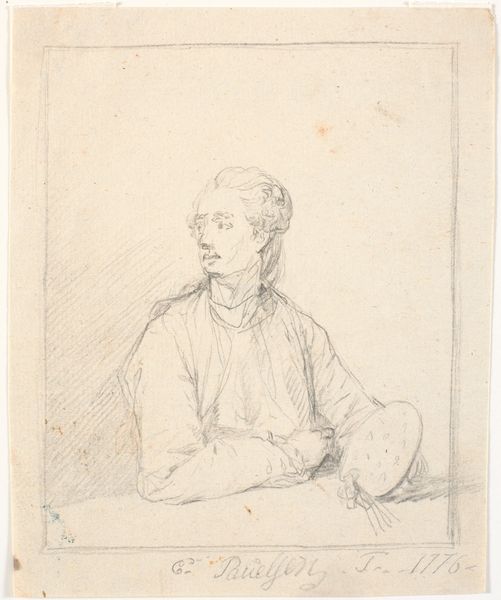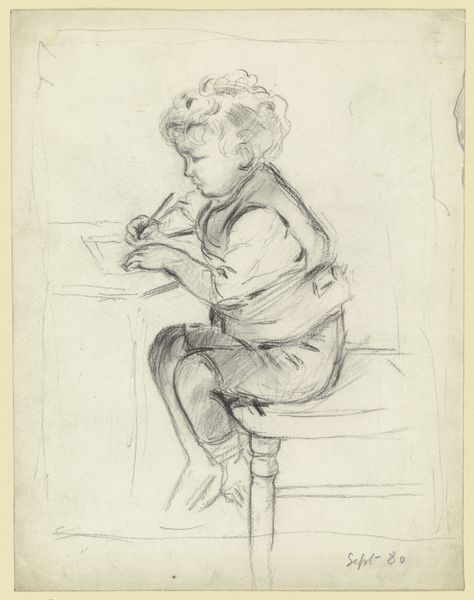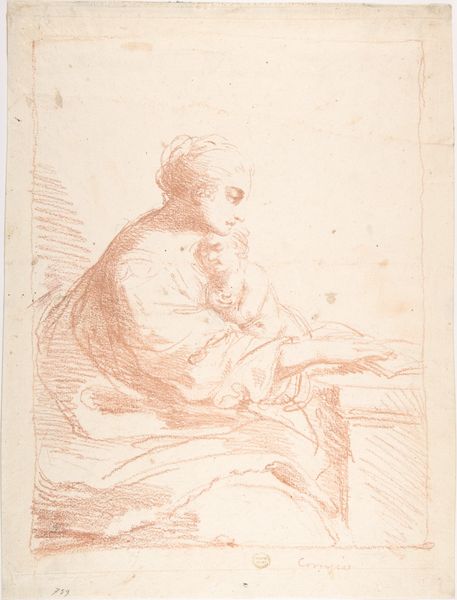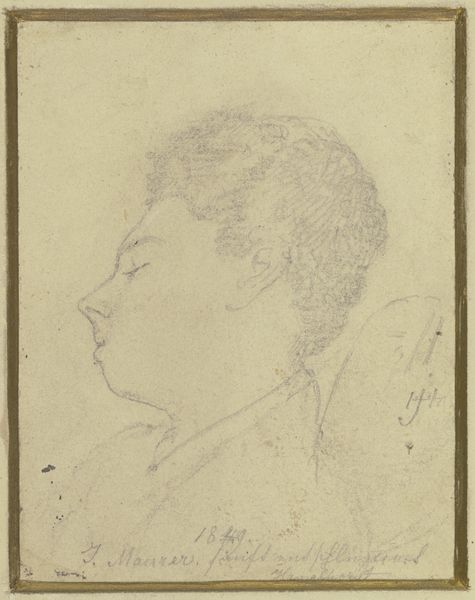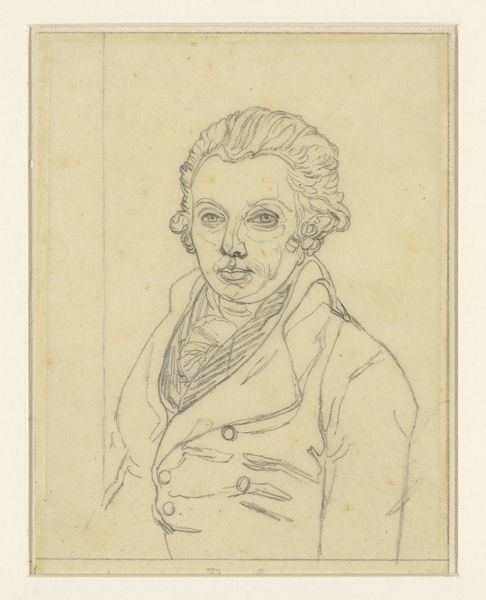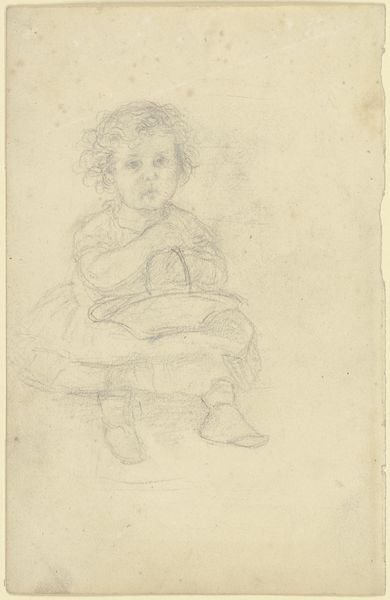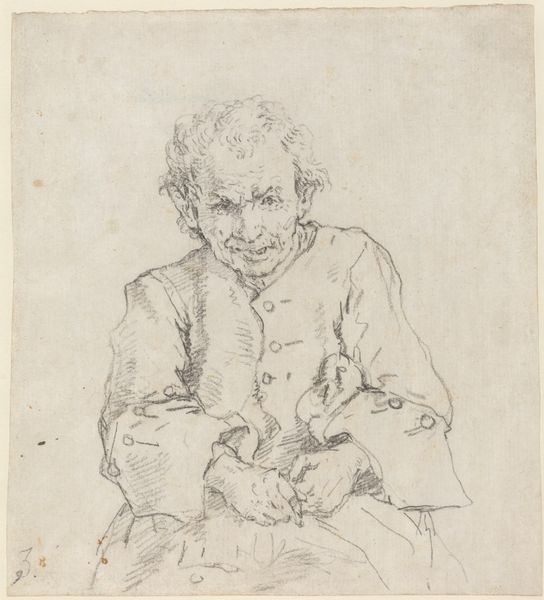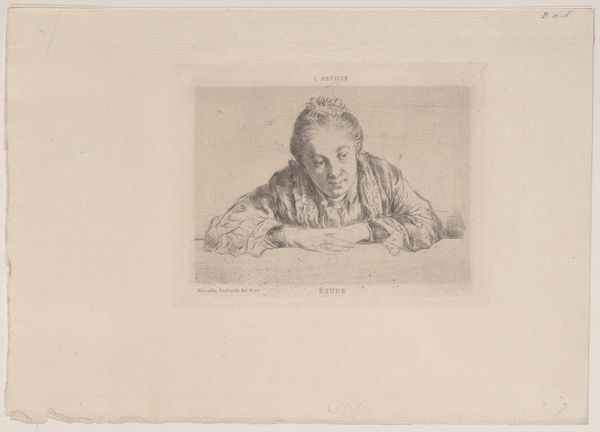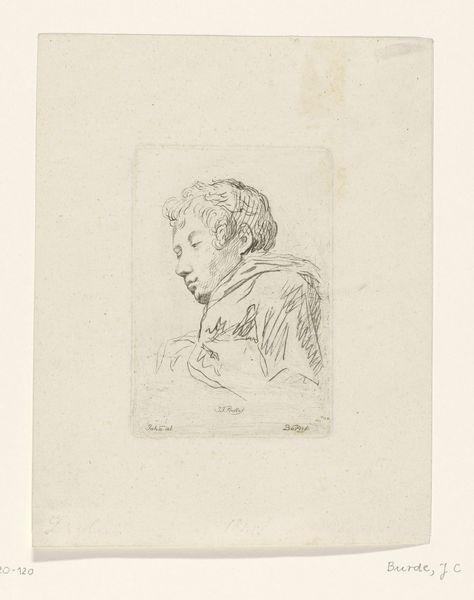
drawing, pencil
#
portrait
#
pencil drawn
#
drawing
#
aged paper
#
toned paper
#
light pencil work
#
pencil sketch
#
personal sketchbook
#
pencil drawing
#
romanticism
#
pencil
#
sketchbook drawing
#
portrait drawing
#
pencil work
Dimensions: 98 mm (height) x 86 mm (width) (bladmaal)
Curator: Here we have "Læsende dreng (Fritz Feilberg)", which translates to "Reading Boy (Fritz Feilberg)". Christen Købke created this pencil drawing in 1831. Editor: It's a tender sketch. The light pencil work gives a fragile quality to the figure. The boy seems deeply engrossed, and the aged paper adds a sense of timelessness to the scene. Curator: Precisely. This work aligns with the Romanticism movement, an era grappling with the rise of individualism and emotional intensity, reflecting the era’s fascination with childhood innocence and the power of literature to shape young minds. The subject's pose, arms crossed, looking down in deep contemplation... it echoes the broader social concerns surrounding education and self-improvement in the early 19th century. Editor: Do you think it normalizes the educational access of the moment, or does it highlight, perhaps unintentionally, its limitations, particularly along class lines? Is the artwork meant to be a social statement or purely aesthetic? I ask, what boy has time to be learning? Curator: It is tricky isn’t it! I think it treads the line delicately, showing potential access whilst quietly reminding us how hard that path would be for some people, a path of great study to escape your assigned station. Of course, Köbke’s art often engaged with everyday life, so while direct social critique might not be his primary intent, the depiction invites reflection on the period’s societal structures. The art suggests the possibilities inherent in literature. Editor: The Romantic artists were all about the inherent power of nature. That said, here, we have a boy engrossed in knowledge! It presents books as a form of self-cultivation... but again... whose self gets cultivated and whose labour pays the bills? I do wonder, do we bring today’s concerns to yesterday’s paintings too much? Curator: That tension between our contemporary gaze and the historical context is constant. As times change we understand different and better angles, right? Editor: Absolutely! Each new vantage point just enriches our engagement with art's lasting relevance. Curator: Well said.
Comments
No comments
Be the first to comment and join the conversation on the ultimate creative platform.
